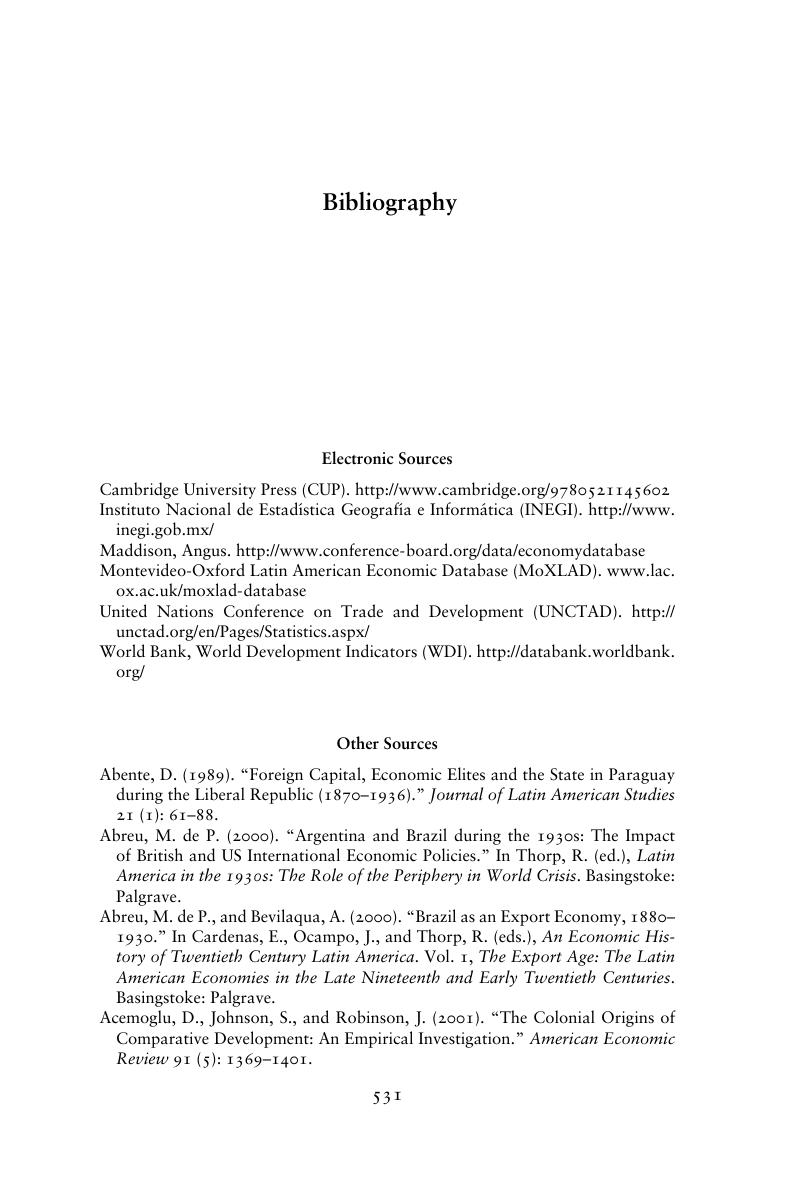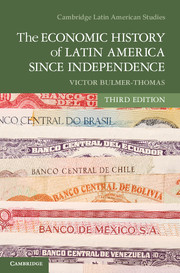Book contents
- Frontmatter
- Dedication
- Contents
- List of Tables, Figures, and Maps
- Preface to the Third Edition
- Preface to the First Edition
- List of Abbreviations
- 1 Latin American Economic Development
- 2 The Struggle for National Identity
- 3 The Export Sector and the World Economy, circa 1850–1914
- 4 Export-Led Growth
- 5 Export-Led Growth and the Nonexport Economy
- 6 The First World War and Its Aftermath
- 7 Policy, Performance, and Structural Change in the 1930s
- 8 War and the New International Economic Order
- 9 Inward-Looking Development in the Postwar Period
- 10 New Trade Strategies and Debt-Led Growth
- 11 Debt, Adjustment, and the Shift to a New Paradigm
- 12 Conclusions
- Appendix 1 Data Sources for Population and Exports before 1914
- Appendix 2 The Ratio of Exports to Gross Domestic Product, the Purchasing Power of Exports, the Net Barter Terms of Trade, and the Volume of Exports, circa 1850 to circa 1912
- Appendix 3 Population, Exports, Public Revenue, and GDP for the Main Latin American Countries before 1914
- Appendix 4 GDP Per Head in Latin America since 1900
- Bibliography
- Index
- References
Bibliography
Published online by Cambridge University Press: 05 June 2014
- Frontmatter
- Dedication
- Contents
- List of Tables, Figures, and Maps
- Preface to the Third Edition
- Preface to the First Edition
- List of Abbreviations
- 1 Latin American Economic Development
- 2 The Struggle for National Identity
- 3 The Export Sector and the World Economy, circa 1850–1914
- 4 Export-Led Growth
- 5 Export-Led Growth and the Nonexport Economy
- 6 The First World War and Its Aftermath
- 7 Policy, Performance, and Structural Change in the 1930s
- 8 War and the New International Economic Order
- 9 Inward-Looking Development in the Postwar Period
- 10 New Trade Strategies and Debt-Led Growth
- 11 Debt, Adjustment, and the Shift to a New Paradigm
- 12 Conclusions
- Appendix 1 Data Sources for Population and Exports before 1914
- Appendix 2 The Ratio of Exports to Gross Domestic Product, the Purchasing Power of Exports, the Net Barter Terms of Trade, and the Volume of Exports, circa 1850 to circa 1912
- Appendix 3 Population, Exports, Public Revenue, and GDP for the Main Latin American Countries before 1914
- Appendix 4 GDP Per Head in Latin America since 1900
- Bibliography
- Index
- References
Summary

- Type
- Chapter
- Information
- The Economic History of Latin America since Independence , pp. 531 - 574Publisher: Cambridge University PressPrint publication year: 2014

